Cross-Disciplinary Molecular Science Education in
Introductory Science Courses: An NSDL MatDL Collection
D. J. Yaron, J. L. Davenport,
M. Karabinos, G. L Leinhardt
Department of Chemistry;
Pittsburgh Science of Learning Center
Carnegie Mellon University
Pittsburgh, PA 15213
1-412-268-1351
{yaron, jdavenport, mk7}
@cmu.edu; gaea+@pitt.edu
L. M. Bartolo, J. J. Portman,
C. S. Lowe
Center for Materials Informatics;
Department of Physics
Kent State University
Kent, OH 44242
1-330-672-1691
{lbartolo, jportman,
clowe}@kent.edu
D. R. Sadoway, W. C. Carter,
C. Ashe
Department of Materials Science
& Engineering
Massachusetts Institute of Technology
Cambridge, MA 02139 USA
+1.617.253.3487
{dsadoway, ccarter, cashe}
@mit.edu
ABSTRACT
This paper discusses a digital library designed to help
undergraduate students draw connections across disciplines,
beginning with introductory discipline-specific science courses
(including chemistry, materials science, and biophysics). The
collection serves as the basis for a design experiment for
interdisciplinary educational libraries and is discussed in terms of
the three models proposed by Sumner and Marlino. As a cognitive
tool, the library is organized around recurring patterns in
molecular science, with one such pattern being developed for this
initial design experiment. As a component repository, the library
resources support learning of these patterns and how they appear
in different disciplines. As a knowledge network, the library
integrates design with use and assessment.
Categories and Subject Descriptors
H.3.7 [Information Storage and Retrieval]: Digital Libraries –
collection, dissemination, user issues; J.2 [Physical Sciences and
Engineering]: Chemistry, Engineering, Physics; J.3 [Life and
Medical Sciences] Biology and genetics.
General Terms
Measurement, Experimentation, Human Factors.
Keywords
Evaluation, Digital Library, Introductory Science courses.
1. INTRODUCTION
This paper discusses our ongoing creation and use of a digital
library collection for cross-disciplinary education in molecular
science. This collection, housed within the Materials Digital
Library (www.matdl.org), serves as a design experiment
regarding the ability of a digital library to advance our goals for
cross-disciplinary education.
The educational challenges we are attempting to address stem
from the rapid increase in the amount of knowledge that must be
acquired to become proficient in a technical domain. The blurring
of lines between domains further increases these knowledge
requirements [4, 5]. As biology becomes increasingly molecular,
biologists must become increasingly proficient at chemistry. As
chemistry becomes increasingly hyphenated into biological-,
materials-, and environmental- chemistry, chemists must couple
their knowledge with that of other domains. As physics widens to
accommodate novel systems inspired by biology and engineering,
physicists are embracing interdisciplinary points of view, such as
is seen in soft condensed matter. As the scope of materials
science continues to expand beyond its roots in metallurgy and
ceramics, engineers must master ever broadening bases of
knowledge, including the molecular science needed for soft and
nano materials. MatDL is designed to help address the
educational challenges posed by these recent advances in the
sciences.
Our strategy is to identify the recurring patterns that experts use
to organize their knowledge and to develop educational resources
that make these patterns explicit to students. The materials are
designed for use in current discipline-specific courses and
highlight the patterns within topics already covered in those
courses.
In the following sections, we discuss the library in terms of a
design experiment from three model perspectives [7] (digital
libraries as cognitive tools, component repositories, and
knowledge networks) and conclude with user survey evaluation
results. By design experiment [2, 3] we mean a design activity
which systematically adjusts instructional materials based on a set
of specified design principles in response to student activity and
learning, tracing adjustments in a systematic fashion. An example
of a design principle is: a student will develop a deeper more
flexible understanding of a complex concept if the aspects of the
problematic concept are identified and linked to a dynamic visual
representation of those specific concepts.
2. DIGITAL LIBRARY AS A COGNITIVE
TOOL
A central element of this design experiment is the ability of
digital library constructs to support learners in connecting ideas
among disciplines. Our target scope is that of molecular science,
Permission to make digital or hard copies of all or part of this work for
personal or classroom use is granted without fee provided that copies are
not made or distributed for profit or commercial advantage and that
copies bear this notice and the full citation on the first page. To copy
otherwise, or republish, to post on servers or to redistribute to lists,
requires prior specific permission and/or a fee.
JCDL ’08, June 16–20, 2008, Pittsburgh, Pennsylvania, USA.
Copyright 2008 ACM 978-1-59593-998-2/08/06…$5.00.
70
including both the study of how molecular structure and motion
lead to emergent macroscopic properties, and the
synthesis/engineering of structures with desirable properties. Such
molecular science is an integral component of disciplines such as
biology, chemistry, physics and materials science. These
disciplines share the goals of molecular science and, although the
focus and details may differ, recurring patterns appear in the
explanatory frameworks and tools employed in each of the
disciplines. These recurring patterns provide the fundamental
cognitive structure of the collection.
By a recurring pattern, we mean concepts and conceptual
frameworks that are:
• Central to each of the domains such that we do not divert
instructional time to topical areas that instructors will view as
peripheral to their course
• Have strong leverage such that improved mastery of the
material will substantially enhance students ability to engage
with core ideas within and between the domains
• Difficult to teach and learn such that the collection focuses on
areas where improved instruction will be of most value
A team of experts from chemistry, materials science, physics and
biology identified a number of patterns that satisfy the above
criteria. Experts from each of the domains could readily identify
with the ideas as being core to their thinking, could cite specific
instantiations of the ideas both in their course and in their
research, and could recall (both from their personal experience
and interactions with students) that drawing connections between
the occurrence of these ideas in different domains involves
considerable effort.
For the first phase of this design experiment, a single recurrent
pattern was identified: the use of free energy landscapes to
understand the effects of temperature on molecular processes.
3. DIGITAL LIBRARY AS A COMPONENT
REPOSITORY
The resources in the digital library are designed to promote
learning of recurring patterns in molecular science. In the first
phase of the design experiment, the resources are focused on the
use of free energy landscapes to understand the effects of
temperature on molecular processes. Throughout the design and
development process, the target is the creation of materials for use
in courses that span the represented disciplines. An anticipated
outcome of the design experiment is the ability of such a crossdisciplinary
approach to create reusable learning resources.
A long standing challenge to curriculum development is the
creation of materials that can be repurposed in a variety of
contexts, so that groups outside the development effort can use
the materials in their own courses. By creating cross-disciplinary
resources, we encourage flexible design on three levels. At the
curriculum level, focusing on the core, cross-disciplinary aspects
of a recurring molecular science pattern leads to resources that
can be used in multiple domains. At the technical level the
simulation and visualization tools must be sufficiently flexible
that they can be configured to show how the recurring pattern is
manifested in each of the domains. Finally, at the delivery level
the materials must satisfy a range of institutions, course types and
instructors. We expect the flexibility encouraged by this design
process to lead to materials that can be used in a wide variety of
contexts [8].
We next describe the resources that came out of this design
process for the first of our recurring patterns. Fig. 1 shows a
typical energy landscape diagram used across disciplines. While
this diagram has tremendous meaning and power to experts, past
experience suggested that novices struggle with both its meaning
and application.
Figure 1. Energy landscape for a molecular process.
Learning resources were designed in accordance with an
instructional sequence which begins with the meaning of the
diagram itself (the x and y axes), then the frameworks that allows
one to draw conclusions from these diagrams (Boltzmann
distributions and constant temperature dynamics), and finally the
distinction between energy and free energy (a refinement of the
meaning of the y-axis). A series of simulations were created that
allow students to visualize and interact with the material. All of
the virtual labs were developed using Java SE 5. The full series of
virtual labs may be accessed on MatDL at:
[http://matdl.org/virtuallabs].
Experts are quite flexible in drawing connections between energy
landscapes and emergent properties such as the rate of a chemical
process and the equilibrium distribution between various minima.
The conceptualizations needed to draw these connections are
entirely missing from the energy landscape diagrams themselves
(the expert notation). To remedy this, a series of simulation tools
were created to make these connections more explicit. These
simulations show balls (and/or boxes) on a vibrating surface that
represents the random thermal motion of a heat bath. The
simulations slowly add features and representations, culminating
in the simulation of Fig. 2.
Figure 2. Final simulation in sequence showing population
distributions resulting from constant temperature dynamics.
Students are prompted to connect the various models and
representations.
71
As the temperature is increased, the average height of the balls
bouncing on the platform increases, as do the number of boxed
being kicked up to stand on their short side. The instructional
materials guide students as they explore the effects of simulation
parameters such as temperature on the distributions of balls
between the upper and lower platforms (or boxes between the
standing up and lying down configurations), the meaning of
specific actions (bounce, fall/kick, transition) and draw
connections between the various representations. The materials
also provide explanations and practice with key underlying
concepts including the Boltzmann distribution, the relation
between barrier height and reaction rate, and the relation between
thermodynamic driving force and the equilibrium distribution.
Although the core instructional materials and simulations are
shared, the context and emphasis vary across the instructional
sequences created for each of the classes. The simulations are
highly customizable, through a configuration file that sets features
such as the number of platforms, the number of balls or boxes,
and the controls made available to the students. The design
process met the initial goals of creating a set of resources that
could be easily repurposed for use in target courses, which span a
range of disciplines and institutional settings. While this is
promising, the ability of the resources to meet the broader needs
of the educational community remains to be assessed.
4. DIGITAL LIBRARY AS KNOWLEDGE
NETWORK
The digital library was designed by a team that spans a variety of
disciplines and institutions, and so forms an initial knowledge
network. The mode of construction and dissemination is designed
to use this as a kernel for building and supporting a larger
network supporting both use and creation of learning resources.
The design team was comprised of experts in materials science,
chemistry, biophysics, instructional technology, learning science,
and library and information science from the Massachusetts
Institute of Technology (MIT), Carnegie Mellon University
(CMU), and Kent State University (KSU). The first phase of the
project has resulted in the creation, deployment, formative
assessment, and dissemination of the digital learning resources
described above.
Discovery and reuse of digital learning resources present real
obstacles for faculty and students [6]. Support for the design and
effective dissemination of high quality, flexible, configurable
learning resources helps to overcome these difficulties. To
facilitate easy deployment and wide dissemination, the materials
are integrated into the NSDL Materials Digital Library Pathway
(MatDL) as part of the National Science Digital Library (NSDL).
MatDL provides open source tools and services to facilitate
collaborative resource design, formative assessment, and wide
dissemination in the interdisciplinary field of materials science
with a target audience of undergraduate students and faculty [1].
As a first step toward building community-focused dissemination,
MatDL installed and maintained a Virtual Labs Wiki
(http://matdl.org/virtuallabs/) for use by this project, using the
popular, open source Mediawiki software
(http://www.mediawiki.org/wiki/MediaWiki) as a wiki engine. To
broaden dissemination, the Virtual Labs Wiki pages were
assigned Dublin Core metadata and included as resources in the
MatDL Repository (matdl.org/repository). Metadata from MatDL
is harvested and made available through the NSDL repository
further broadening access to the materials.
The MatDL Virtual Labs Wiki first served as a private workspace
for the VL development team to collaboratively assemble
products, such as instructional materials. Once the project
matured, the site was made publicly viewable so that students,
faculty, and other interested individuals could interact with all of
the virtual labs and instructional materials from a single coherent
site without needing to install special purpose software or
otherwise leave their web browser environment.
An important part of an educational knowledge network is the
ability to collect information regarding the use of the resources
and the extent to which they promote learning. Links to online
surveys, pre-tests, and post-tests were also made available from
the group-moderated wiki. This makes it as convenient as possible
for interested students to provide valuable feedback about their
virtual lab experience. The pre-tests and post-tests also include
items designed to assess student learning. These include multiple
choice items, which have the advantage of allowing statistical
measures to be automatically generated. More open ended items
are also included, since these provide deeper insight into the
nature of students’ conceptions and misconceptions.
5. Evaluation
To date, the resources have been used in an Introduction to
Biological Physics class at Kent State University (KSU) and in an
Introduction to Solid State Chemistry class at MIT. Additional
information will be obtained as this project continues in this
spring, when the virtual lab simulations will be used in the CMU
Modern Chemistry 2 course, with an enrollment of 150 students.
Twenty students from KSU and MIT completed a survey to
measure student perceptions of the virtual lab activity. Students
rated each statement on a 5-point scale from strongly agree to
strongly disagree. Students had very positive perceptions of the
interactive simulations. The majority of students indicated that the
activity: Helped them connect concepts in new ways (61%),
Helped them to see how the same principles apply to different
topics (55%), Was well organized (78%), Was easy to understand
(71%), Was a good use of time (61%), Was fun (89%), and Gave
them a deeper understanding of principles (67%). In an open
ended comment section a number of students reported that they
found the simulation “easy to use, interactive and fun” and that
“the graphics are really good and the sequence makes a lot of
sense.”
In order to measure the development of conceptual understanding,
pre and posttests designed to reveal student conceptions were
created. These assessments include multiple choice, explanation
and transfer questions that present students with novel scenarios
and ask students to make inferences and predictions. Preliminary
results from a sample of 6 MIT students that completed both pre
and posttests suggest that the simulation activity improved
conceptual understanding of the influence of temperature on
chemical systems. For instance, 4 of 6 students made incorrect
predictions about a chemical system at high temperatures at
pretest (e.g., “If you raise the temperature you lower the barrier”)
yet all demonstrated correct knowledge at posttest (e.g., “At a
high temperature the molecules will have enough energy to
overcome the activation energy barrier so some will land in State
72
2 and some will stay in State 1 but they will be free to move back
and forth.”)
Overall, results from our preliminary assessments support the
ability of the dynamic visualizations to promote student learning
of the target recurring pattern. The positive scores regarding
student satisfaction indicate that the materials are comprehensible
and do not unduly tax or frustrate the learner. Responses to
questions regarding the meaning of the visual representations
indicate that students understand how the visualizations relate to
the underlying concepts they are meant to depict. Responses to
open ended assessment items suggest that students are learning
the target concepts. The assessment data, including especially
films of students interacting with the simulations at KSU, did
reveal flaws in the user interface that caused student attention to
be drawn to irrelevant or distracting features of the simulation.
Modifications based on this formative data were put in place
before the MIT Solid State Chemistry class.
These initial efforts suggest that the constructed digital library is
able to support a knowledge network that integrates development,
use, and assessment of a set of learning resources that crosses
courses, disciplines and institutions. Additional information will
be obtained as this project continues in Spring ‘08 when the
virtual lab simulations will be used in the CMU Modern
Chemistry 2 course. Students from this course will complete pre
and posttest assessments, concept questions and the student
perception survey.
6. DISCUSSION
This paper discusses a design experiment involving creation of a
cross-disciplinary digital library collection, within MatDL, from
three model perspectives [7]: digital libraries as cognitive tools,
component repositories, and knowledge networks. As a cognitive
tool, the collection offers resources organized around patterns in
molecular science that recur across disciplines, with the design
goal of supporting learners in recognizing and mastering these
patterns. In the role of component repository, the collection
supports creation and management of resources that are
sufficiently flexible that they can be used in multiple disciplines,
institutional contexts and technical infrastructures. The design
goal is that such flexibility will maximize the potential for reuse
of the learning objects. As a knowledge network, MatDL uses
social interaction services to support a collaborative process that
integrates design, development and assessment. The design goal is
to promote continual improvements of the materials based on data
collected regarding learning outcomes and use in multiple
contexts.
Building upon this initial work, we plan to expand the digital
library along dimensions associated with each of the three
models. As a cognitive tool, the library will expanded to other
recurring patterns in molecular science including energy
landscapes and the molecular forces that establish these
landscapes; the exchange of quantities (heat, protons, and
electrons) within collections of molecules; and the way both
natural and designed systems coax molecular systems to behave
in desirable manners. If successful, organization around recurring
patterns can provide a model for developing other crossdisciplinary
collections. As a component repository, integration of
the collection with MatDL's MatForge will more fully support
collaborative technical development of learning resources by
providing a central point for ongoing code development and
archiving of these digital resources. MatForge (matforge.org)
currently provides an online workspace for development of
materials science simulation tools by teams at government and
university sites. As a knowledge network, support will be added
to the collection that allows faculty and students to submit
comments and adapted versions of the learning resources for
review and possible dissemination, and to allow sharing and
aggregation of assessment data. The long term goal is to establish
an extended community engaged in using and growing the
original and other complimentary cross-disciplinary collections.
The results of this continuing design experiment will inform the
creation of digital libraries that integrate development with use
and assessment. Such libraries can help build an open-access
collection of vetted, reusable, and evolvable learning resources
for use in 2-year and 4-year college introductory science courses.
7. ACKNOWLEDGMENTS
This work (DUE-0632726) and NSDL MatDL (DUE-0532831)
are supported by the National Science Foundation. Any opinions,
findings, and conclusions or recommendations expressed in this
material are those of the authors and do not necessarily reflect the
views of NSF.
8. REFERENCES
[1] Bartolo, L., Lowe, C., Sadoway, D., Powell, A., & Glotzer,
S. 2005. NSDL MatDL: Exploring digital library roles. DLib
Magazine, 11, 3. Available at
http://dlib.org/dlib/march05/bartolo/03bartolo.html
[2] Brown, A. 1992. Design Experiments: Theoretical and
methodological challenges in creating complex interventions
in classroom settings. Journal of the Learning Sciences, 2, 2,
141-178.
[3] Cobb, P., Confrey, J., diSessa, A., Lehrere, R. & Schauble,
L. 2003. Design experiments in educational research.
Educational Researcher, 32, 1, 9-13.
[4] Committee on Science, Engineering, and Public Policy.
2005. Facilitating interdisciplinary research. Committee on
Facilitating Interdisciplinary Research. Washington, DC:
The National Academies Press.
[5] Metzger, N. & Zare, R. 1999. Interdisciplinary research:
From belief to reality. Science, 283, 5402, 642 – 643..
[6] Sumner, T. & Dawe, M. 2001. Looking at digital library
usability from a reuse perspective. Proceedings of the
ACM/IEEE-CS Joint Conference on Digital Libraries, 416-
425. Roanoke, VA USA. Association for Computing
Machinery, Inc. (ACM).
[7] Sumner, T. & Marlino, M. 2004. Digital libraries and
education practice: A case for new models. Proceedings of
the ACM/IEEE-CS Joint Conference on Digital Libraries,
170-178. Tucson, AZ USA. Association for Computing
Machinery, Inc. (ACM).
[8] Yaron, D., Milton, D.J. and Freeland, R. 2001. Linked active
content: A service for digital libraries for education,
Proceedings of the ACM/IEEE-CS Joint Conference on
Digital Libraries, 25-32. Roanoke, VA USA. Association for
Computing Machinery, Inc. (ACM).
73
Subscribe to:
Post Comments (Atom)


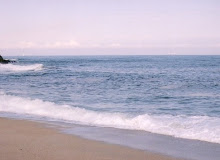





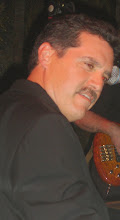





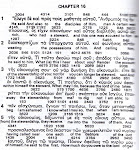

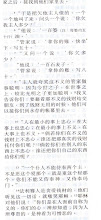

















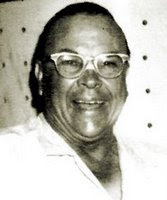







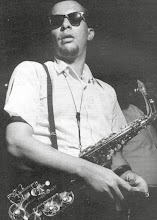




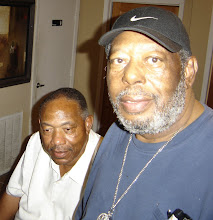













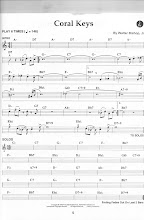

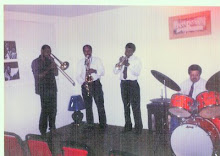






No comments:
Post a Comment